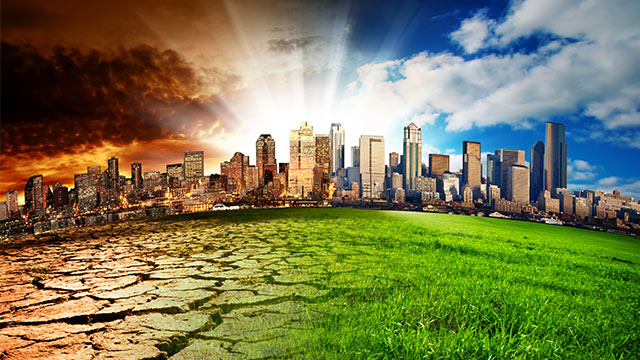The Philippines has two main seasons, characterized mainly by the amount of rainfall experienced during each one. The dry season runs generally from November to April, while the wet season persists from May to October. Seasons are not always particularly distinct, however, and many parts of the country experience rainfall all year round.
Storms usually enter the country around June and increase in frequency over the course of a few months. Frequency peaks in August and drops as the rainy seasons draw to a close. Nonetheless, many of the country’s deadliest and most destructive storms made landfall late in their respective seasons, in the range of September to November.
The Philippines has long been particularly vulnerable to extreme weather. But in recent years the nation has suffered from even more violent storms like Typhoon Haiyan (Super Typhoon Yolanda). On average, about 20 tropical cyclones enter Philippine waters each year, with eight or nine making landfall. And over the past decade, these tropical storms have struck the nation more often and more severely, scientists believe, because of climate change. In addition, two factors unique to the Philippines—its geography and development—have combined to exacerbate both this threat and its devastating consequences.
Climate change is happening now. Evidences seen support the fact that the change cannot simply be explained by natural variation. The most recent scientific assessments have confirmed that this warming of the climate system since the mid-20th century is most likely to be due to human activities; and thus, is due to the observed increase in greenhouse gas concentrations from human activities, such as the burning of fossil fuels and land use change. Current warming has increasingly posed quite considerable challenges to man and the environment, and will continue to do so in the future.
This is not an easy problem to fix, but we need to try. The first step is educating citizens both in the Philippines and around the world about what the nation is facing and about the practical clean-energy solutions available that can begin to address the harmful effects of climate change in the Philippines and beyond.
The smoke-belching jeepneys that thickens Manila’s traffic-choked streets around the clock are blamed for clogging the roads, compounding the dismal traffic problem and dirtying the city’s air. Southeast Asian countries are ranked among the most polluted in the world on Verisk Maplecroft’s Air Quality Index, which assesses the atmospheric concentration of particles smaller than 2.5 micrometers, known as PM 2.5. Nations including Thailand, Laos, and Vietnam are classified as extreme risk, with the Philippines and Singapore medium risk. The Philippines last year upgraded its fuel standard to Euro IV diesel, a grade containing four times more sulfur than China’s benchmark fuel, while Indonesia plans to apply Euro IV for motor vehicles in 2018.
The most popular public transport in the Philippines is now being targeted for the scrap heap as President Rodrigo Duterte tries to modernize the nation and clean up its air. Duterte, in a recent speech, gave the owners of old jeepneys ‘until the end of the month or until the end of the year’ and threatened them with arrests if they would still ply their routes using old jeepneys
Filipinos modified the Army Jeep, making it artsy by customizing the vehicle with Filipino touches such as chrome horses, banks of colored headlights, radio antennae, paintings of the Virgin Mary and unique artwork inspired by rustic scenes.
The jeepney was often called the “King of the Road” because of their sheer numbers on the city streets or rural roads, but Jeepney drivers are notorious for never following traffic regulations.
Indeed, the jeepney has become the symbol of Filipino creativity, ingenuity and innovativeness, making it one of the most recognizable icons of Filipino pop culture.
According to LTFRB: The January 1 deadline President Rodrigo Duterte gave for the phase out of old jeepney units was simply an ‘expression of urgency’

